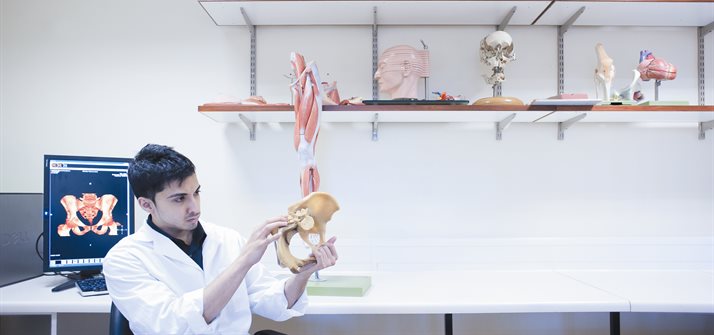
BioBones - Biodegradable Bone Composite
Fully degradable composite implant materials are highly desirable in the treatment of damaged or defective bone tissue. Replacing bone usually relies on metal pins or plates which have to be removed later, requiring additional surgery that is made difficult by scar tissue. Efforts to address these issues have been made using polymer materials but to date they have suffered from insufficient mechanical properties and are bulky, making them obvious under the skin.
In the BioBones project, a novel bone graft material; a composite of resorbable phosphate fibres and resorbable polyesters was developed. A team of materials scientists biomedical scientists worked with a consultant maxillofacial surgeon at the Queens Medical Centre in Nottingham, to develop a composite material with similar mechanical properties to bone, but includes a fully resorbable biodegradable glass fibre to allow new bone to grow. The material addresses the need of orthopaedic surgeons for implants which provide strength and support for bony defects, then slowly degrade as they are replaced by new bone.
Mechanical properties
The novel composite material has significantly better mechanical properties than equivalent polymer implant materials and is completely resorbable. It provides good mechanical properties and low thickness profiles as would a metal but retains the formability of a polymer material. The rate at which the composite material resorbs can be tailored by modifying the constituent parts, allowing for application to different sites in the body. The material can be reformed at low-temperature, allowing for easy reshaping in theatre to specific patient requirements.
We have had successful pre-clinical trials with this technology. Funding from the Health Technology Devices (HTD) scheme is now developing prototype orthopaedic fracture plates with industrial partner DePuy.
Meet some of our experts
Chris Rudd
Professor of Mechanical Engineering, Pro Vice-Chancellor, Provost University of Nottingham Ningbo Campus
Andy Parsons
Senior Research Fellow, Faculty of Engineering
Key benefits
- Stiffness closely matching that of cortical bone; avoids stress shielding
- Fully resorbable; secondary removal surgery not required
- More slowly resorbed than other degradable implant materials; provides long-term support and shape maintenance with no rapid release of degradation products
- Potential for direct product replacement, with no new surgical techniques required
- Shape of implant can be optimised by surgeon in theatre using low temperature reforming
- Complex, bespoke shapes can be produced
- Can be tailored to produce an intermediate porous structure suitable for bony in-growth
- Excellent in-vitro and in-vivo results to date
Applications
Initial applications are low-load bearing areas of bone repair, eg:
- Orbital floor
- Cranial plates
- Retaining plates for bone filler e.g. in spinal fusion
- Jaw/cheek plates
- Finger/toe plates (or other areas of thin skin)
Click here for licensing opportunities and more information on the properties of BioBone